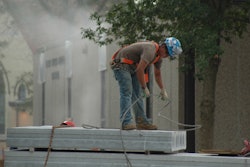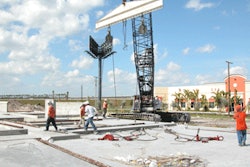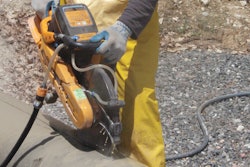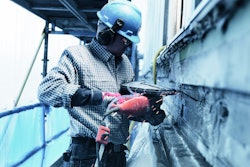Since Facebook is such a visual medium, I periodically scan the Internet and re-post examples of “#safetyfails” as a teaching tool to highlight what NOT to do on a construction site (Facebook.com/EquipmentToday). While these images and videos may be accompanied by a humorous caption (or at least my attempt at one), they are far from funny when you consider the lives being placed at risk.
What’s disturbing is the volume of these images you can find with just a quick Web search. Granted, they span from across the globe, but no country, or jobsite, is immune. Despite how far we have come as an industry, there are still safety fails on U.S. construction sites on a daily basis — though hopefully not as dramatic as those running viral on social media sites.
Even if you have an effective safety program in place or a safety manager on site, unsafe practices or conditions can occur. There are many reasons. Maybe the job involves a tight time table, causing shortcuts to be taken in order to get the work completed on schedule. Perhaps certain hazards get “overlooked” due to the expense required to mitigate the problem. It could be the result of a risk-taking mentally, or an “I’ve done this before and nothing happened” attitude taking over for
common sense.
Regardless of the reasons behind it, these safety fails are a time bomb for your business. Eventually, they will lead to an accident, and it’s only a matter of the degree of severity.
So what can be done to protect yourself, your people and your company? You can start by building a safety culture within your operation. This requires developing a safety attitude in all aspects of your business. Safety First should be the rule, not just an empty platitude written in an employee manual or posted on a wall.
A safety attitude must start at the top and work its way down. It also requires continual nurturing to become ingrained throughout the organization.
If you don’t have one already, developing a formal safety program is an important first step. Put your objectives for the program in writing, outline expectations for safe practices and emphasize the repercussions for unsafe acts. Then walk the walk by following the specified rules anytime you set foot on the jobsite.
Next, ask your employees for suggestions for areas that could be improved upon and any tools they need to promote safe practices. If needed, bring in a safety consultant to perform a risk assessment on projects, in your shop and even in your office. Be sure to implement suggestions to the best of your ability, keeping in mind that improving safety will actually save dollars in the long term.
Regular communication about safety is also essential. Emphasize it on a regular basis through daily tailgate talks, posters around the office and jobsite, postings in company social media sites and/or employee e-newsletters, periodic bulletins/handouts, etc. (Have suggestions that work? Send them to me at [email protected] and I’ll share them in a future issue.) Because safety is a 24/7 process, be sure to stress safety both on the job and off.
If safety fails are easy to find online, helpful safety information is even more plentiful. Check out OSHA.gov, buildsafe.org, safetysmart.com and similar sites for safety tips, as well as guidelines for regulatory compliance. You can also find useful information in the Construction Zone Safety and IPAF Elevating Safety supplements enclosed with this issue. And for even more information on safety-related topics, visit our website at ForConstructionPros.com.
Stay safe out there!




















